Thoughtfully selecting and installing high-quality benches makes public parks more enjoyable places to gather. To make sure these public seats fully serve communities for years to come, several key considerations around safety and accessibility should guide each phase of the process—from initial planning to final placement.
Once properly positioned and fastened in place, these outdoor benches invite both quick pit stops and lengthy lounging without worry. By blending durability standards with inclusive accommodation features before anchoring securely, local spaces can provide welcoming rest areas for residents of all ages and abilities.
Selecting Bench Materials
When choosing outdoor bench construction materials, balance aesthetic appeals, longevity, cost, sustainability, and accessibility concerns. Utilizing durable, low-maintenance compositions ensures public spaces stay inviting as years pass.
Wooden benches offer a timeless, eco-friendly appearance but demand vigilant weatherproofing and upkeep. Metal, such as powder-coated steel or aluminum, withstand heavy use, though it conducts temperature extremes. Concrete delivers unmatched 50-year lifespans yet proves cumbersome to transport and install without heavy equipment. Recycled plastic benches with a thermoplastic coating rival concrete’s durability with easier customization for ergonomic/accessible features.
Key considerations around materials include:
- Durability: Concrete lasts 30+ years, versus 15-30 years for metal and 10-20 years for sustainably sourced wood before replacement is needed. Plastic lifespans fall between metal and concrete grades.
- Installation: Concrete requires grading preparation and reinforcement to prevent cracking but ensures stability once cured. Wood and plastic allow simpler fastening to the surface.
- Maintenance: Wood needs protective finish reapplication every 2-3 years. Plastic, metal, and concrete simply need periodic cleaning.
Future-thinking planners select resilient, easily maintained benches offering decades of uninterrupted access and enjoyment by all. Thanks to material advances, accessibility need not necessitate sacrifice of style or quality.
Placement and Orientation
Strategic placement of site furnishings contributes greatly towards an accessible, engaging park experience. Thoughtfully sighting seating in accordance with key principles creates welcoming rest areas for all to enjoy.
Outdoor bench placement guidelines include:
- Positive Sightlines: Face benches towards attractive focal points like gardens, fountains, and playgrounds to foster relaxing vistas. Avoid backing directly onto noisy streets or parking areas.
- Sun & Shade Access: Cluster benches together to provide a mix of both sheltered and sunny seating options to cater to visitor preference.
- Nearby Amenities: Site benches along active thoroughfares such as park pathways, adjacent cafes, or nearby attractions to invite spontaneous social interactions.
By orienting benches according to park layout, nearby sights, and visitors' circulation patterns, the furniture naturally fits into public spaces without congestion. Visitors gravitate towards well-positioned benches placed near where people want to relax, converse, and observe–key anchors for community connection.
Park Bench Designs for Comfort
Ergonomic park bench designs place proper support and ease of use on par with aesthetics. Benches designed based on research about size and accessories can allow anyone, no matter their body type or ability, to sit comfortably for long periods of time.
Seating design experts identify these main bench ergonomic criteria:
- Appropriate seat depth, height, and contouring align with common human proportions.
- Back support featuring dual curved rests extending fully down the rear midline.
- Wide, rounded armrests ease lift-assist motions from a seated position.
Accessibility Guidelines
Crafting park benches accommodating citizens of all capacities represents a core civic duty. Beyond meeting technical ADA specifications around arm/backrest and seat spacing, the truly accessibility-focused design considers people’s varied needs and abilities holistically.
Key elements of an accessibility-centric approach involve:
- Arm and Back Support: Sturdy armrests on both sides ease sit/stand motions for elderly visitors and assist wheelchair transfers. Backrests provide critical lumbar support.
- Wheelchair Clearances: For ADA requirements, maintain a minimum of 60 inches in front to allow wheeling up to the bench. Preserve at least 36 inches of side clearance around the bench to facilitate transfers.
- Inclusive Design Integration: Contrasting colors aid navigation for the vision impaired. Textured materials support cane guidance and tactile orientation for the blind.
By weaving these inclusive considerations thoroughly into planning from the outset, public benches transform from fixed objects into versatile centers welcoming all comers through the intuitive form.
Securing & Anchoring Benches
Properly securing park benches keeps communities safe for decades while deterring vandalism. However, appropriate anchoring techniques vary greatly depending on bench size, weight, materials used, and site conditions like soil type and subsurface composition. Rather than attempting do-it-yourself mounting, work closely with licensed contractors with specialized public furniture installation expertise to develop custom solutions tailored to your park's unique needs.
Experienced experts understand the core imperatives of strength, security, and accessibility that quality mounting solutions balance. By carefully thinking about the best bench locations and then making sure each bench gets firmly installed, parks and public spaces can give people safe places to gather for many years.
Some best practice anchoring guidance by material include:
Wood Benches
- Attach bench frame to concrete pads or piers sunk 12+ inches with tamper-proof lag screws.
- Optional: Secure boards to frame with a proprietary anti-theft system.
Metal Benches
- Bolt legs to buried metal plates or concrete pads per manufacturer specifications.
- Use security screws/epoxy anchors for added tamper protection.
Concrete Benches
- Reinforce the pre-cast bench with the rebar before positioning it on the leveled site.
- Partially submerge bench legs/base in concrete for immobile mass.
Plastic Benches
- Utilize manufacturer-recommended anchors for surface type.
- Lag bolt-through bench feet into concrete for a robust partnership.
While exact mounting methods vary, all benches must withstand wind, jostling, and downward force. Follow manufacturer recommendations and hire professional help if necessary. Regularly inspect anchors for deterioration and replace hardware every 10-15 years or as needed.
Anti-theft and Anti-tampering Anchors
Even sturdily installed benches attract tampering without dedicated provisions. Extending anchoring measures with subtle anti-theft additions introduces further impediments to would-be vandals. Options include:
- Security Fasteners: Tamper-proof screws, epoxy, or custom promo nuts all discourage removal by requiring special tools. Match material color for subtlety.
- Lock Down Systems: Parts like slats can secure to the frame using threaded posts to frustrate lifting.
- Anchoring Add-Ons: Prominently placed but hard-to-access spike anchors driven around the bench pad area deter forceful extraction.
By discouraging and delaying quick component removal using integrated but low-profile means, anti-theft designs deliver community seating built to withstand attempts to disturb mutual public areas.
The Importance of Regular Maintenance
A common park enhancement mistake involves believing the work concludes once new benches get bolted down. While sturdy installation is vital, the useful lifespans of even robust furnishings dwindle without proper care. Worn fasteners, weathering, graffiti, and debris all degrade premises when overlooked.
By budgeting moderate yearly maintenance to keep components tight, clean, and orderly, the initial investment rewards communities for decades rather than disappointing prematurely. Plan for upkeep expenses from the start and park furniture fulfilling potential stays locked in.
Plan ongoing bench maintenance, including:
- Paint & Stain: Annually maintain appearance while protecting wood integrity against weathering. Use anti-graffiti treatments.
- Hardware Checks: Ensure bolts and anchors remain tightened over time to catch issues early before they become safety hazards.
- Power Wash: Thorough cleaning every few years revives appearance and clears staining/carving vandalism.
- Landscape Care: Clear sightlines/walkways by pruning nearby trees/shrubs and removing litter/debris.
With proper installation reinforced by preventative maintenance, benches invite communal comfort for years. By deterring damage before it escalates, communities enjoy orderly, welcoming public spaces built to last. For seasonal bench maintenance advice, read our guide.
High-Quality Outdoor Park Benches from Furniture Leisure
For over 15 years, Furniture Leisure has provided a premium commercial bench selection, made right here in the USA, to high-profile parks, universities, sports venues, memorials, main streets, and commercial locations nationwide. Our vast collection offers premium benches crafted from diverse, robust materials like weather-resistant woods, recycled plastic, concrete, aluminum, and steel to suit any environment. We also offer an extensive range of outdoor seating and furnishings, from picnic tables to memorial benches and park grills to umbrellas, all offered with many color options.
We pride ourselves on outstanding customer service guided by our motto, “where furniture and leisure come together to make life better.” Customers choose us for unmatched quality, durability across decades of intensive use, and aesthetics perfecting both contemporary and traditional community spaces.
For those looking to install attractive, durable benches, browse our park benches or contact us today to learn about our customized commercial bench options.
Frequently Asked Questions
What is the best material for outdoor park benches?
The best outdoor bench material depends on the setting and budget. Long-lasting concrete works well for most public parks. Powder-coated aluminum or steel make durable choices but transfer temperature extremes. Traditional wood offers a classic rustic look but requires more maintenance.
How deep should concrete anchors be sunk when mounting park benches?
Structural standards require sinking concrete bench anchors at least 18-24 inches below grade on properly compacted and leveled sites to ensure stability once cured. Consult engineers for assistance.
What are tamper-proof park bench hardware options?
Tamper-resistant bench mounting options include proprietary nuts requiring special tools, hammer-locked spikes, reinforced concrete grades, cable tethers, and prominently visible deterrents like ground anchor pylons arranged nearby.
How can I stop park bench theft and vandalism?
Deter park bench theft/vandalism by selecting heavy, durable designs, prominently installing theft-deterrent anchors nearby, locking down removable parts, maintaining a tidy appearance, and anchoring with cable tethers or epoxied fasteners.


















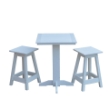





























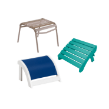





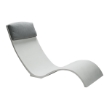







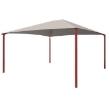
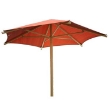
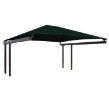
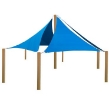
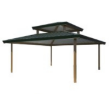
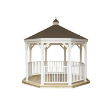
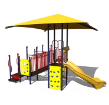











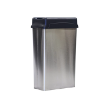
































Leave your comment